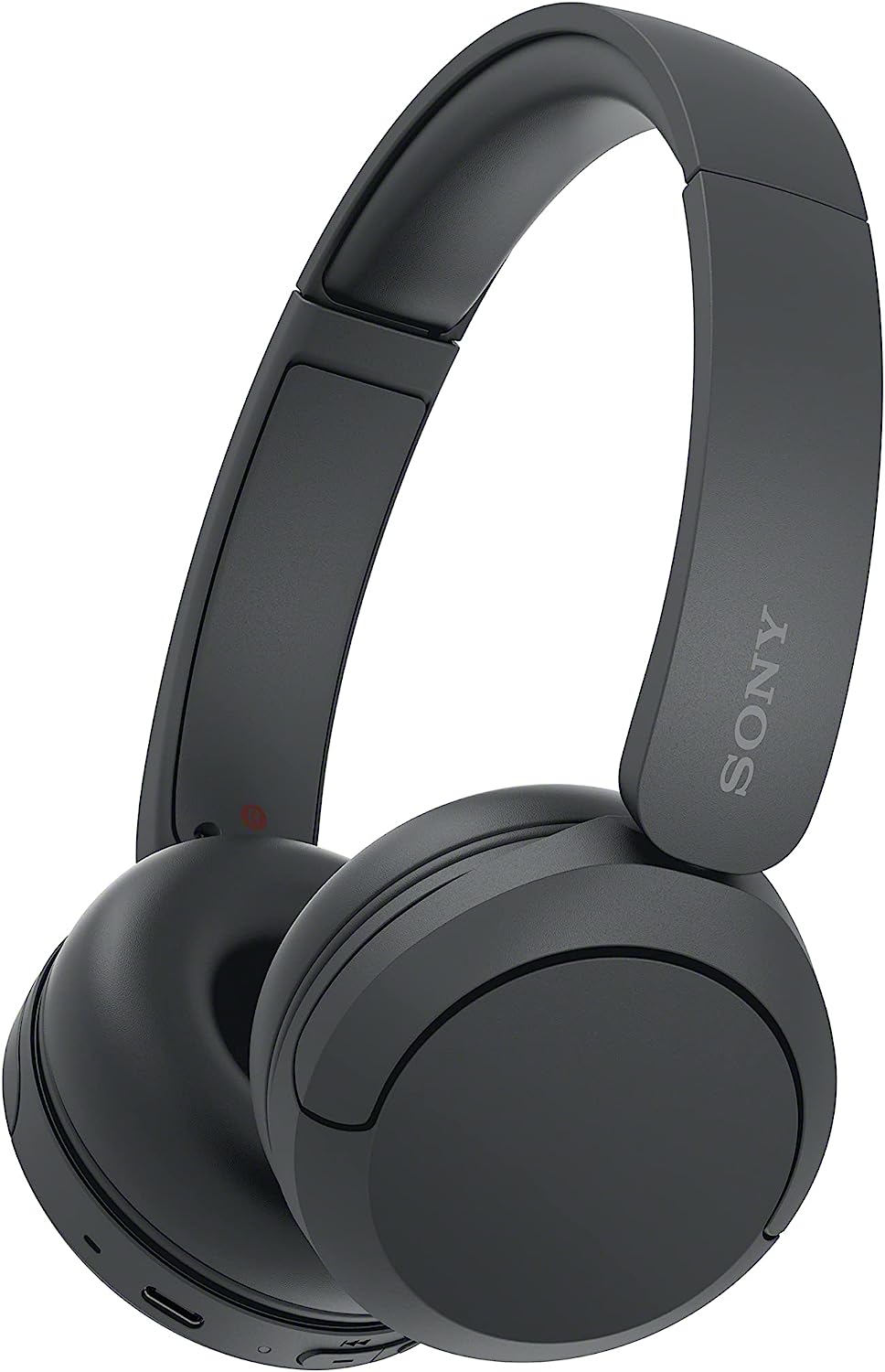Let’s cut the fluff—budget headphones aren’t what they used to be. We’re not talking about flimsy builds and tinny sound anymore. These days, some of the most impressive daily drivers come in under the radar, with prices that make you do a double take. That’s exactly where the JBL TUNE 510BT, Sony WH-CH520, and Anker Soundcore Life Q20i come into play.
You’ve probably seen all three sitting on the same shelf or scrolling across the same price filters. They seem similar at a glance, but once you put them on and start playing around with the features, the differences start stacking up. And trust us, there’s one here that quietly steals the show—but more on that later.
Design matters—especially when it’s on your head for hours

Right off the bat, the most obvious split is in how these headphones sit on your head. The Sony WH-CH520 and JBL TUNE 510BT go for a supraaural (on-ear) design, which means they sit right on your ears. Great for portability, light on the neck, but you’ll definitely feel some ear fatigue after a few hours, especially in warm weather.
Then there’s Anker’s Soundcore Life Q20i—circumaural, over-ear, and clearly built for comfort. The earcups fully surround your ears, giving you that cushioned “sink in” feeling. And not just that—it helps passively block out external sound, which is especially noticeable when you’re out and about.
In terms of weight, Sony is featherlight at 147 grams, JBL lands close behind at 160 grams, and Anker is the heavyweight at 244 grams. You notice that extra weight at first, but the over-ear comfort makes up for it, especially if you’re listening for long periods.
And when it comes to colors? Sony offers the most variety, adding beige and white to the classic black and blue lineup. JBL spices it up with a pink option, and Anker keeps it chill with navy and black. So if style matters, you’ve got choices—but nothing wildly adventurous here.
Noise control: only one brings ANC to the party
Here’s where Anker instantly pulls ahead. The Soundcore Life Q20i is the only one of the three with active noise cancellation and ambient mode. That’s not just a spec—it changes how and where you can use these headphones. On a train, in an open-plan office, or walking through a noisy street, flipping on ANC instantly gives you a little pocket of peace.
Neither Sony nor JBL includes any form of noise cancellation, which puts them more in the “quiet room” category. But Sony makes a subtle counterplay with spatial audio support, expanding the soundstage and adding a sense of directionality to what you’re hearing. It’s a cool touch for movies or live recordings, but it won’t silence your surroundings.
JBL’s 510BT? No ANC. No spatial audio. No app. It’s basic—functional, but basic.
Microphone quality: one’s made for clearer calls
You might not think about mic quality until you’re in the middle of a call in traffic and no one can hear you. Anker’s got four mics—two per earcup—making it the strongest contender for call clarity and noise filtering.
Sony and JBL both use a single mic setup, which works fine in quiet rooms, but struggles in noisy environments. If calls, Zoom meetings, or voice memos are part of your daily routine, the Q20i handles it with more finesse.
Battery: longer, faster, and just enough differences

Let’s talk endurance. Sony leads with a flat 50 hours of playback, while Anker goes up to 60—but only without ANC. With ANC on, Anker clocks in around 40 hours, which still puts it solidly in the long-haul camp.
JBL offers 40 hours too, but that’s with no extra features draining power. So in a straight race, they’re all strong performers—you’re not reaching for the charger every day, which is a big win at this price point.
Now, the charge time? Anker wins that one hands down—just 1.5 hours for a full charge. JBL takes about 2 hours, and Sony lags behind at around 3 hours. All three offer quick charging, though: get a few hours of playback with just 5–10 minutes of charge. If you’re the “oops, forgot to plug in” type, that’s a lifesaver.
Bluetooth and multipoint: more capable than you’d expect
Surprisingly, all three models support Bluetooth multipoint, which means you can stay connected to your laptop and phone at the same time. Whether you’re switching between Spotify and a Zoom call, or juggling work and personal devices, it’s seamless once you get used to it.
Sony brings Bluetooth 5.2 to the table, slightly edging out JBL and Anker, which stick to Bluetooth 5.0. The differences? Minor in daily use, but 5.2 tends to offer more stability and better energy handling, especially in crowded areas.
And yes, voice assistant support is present across the board. No touch panels here—it’s all physical button controls. Not fancy, but reliable and intuitive.
App support: one doesn’t play ball
This is a biggie if you care about customizing your sound. Both Sony and Anker have full app support, giving you access to custom EQ, firmware updates, and listening presets. You can tweak the bass, adjust mids, and even fine-tune voice clarity for calls or podcasts.
JBL? No app. No EQ. No updates. What you hear out of the box is what you get, for better or worse. That might be fine for casual users, but if you want control, this is a limitation you’ll notice fast.
Sound isolation and form factor: earcups make a difference
Back to comfort and isolation. The Anker Q20i’s over-ear design naturally blocks more sound, even before ANC kicks in. That means less bleed from your surroundings, and more immersive listening without needing to crank up the volume.
Sony and JBL, being on-ear, let more external sound in. If you’re in a quiet space, that’s no big deal. But on a bus, in a café, or even at home with background noise, it becomes a thing. Also, over-ear headphones tend to spread pressure more evenly, which helps reduce fatigue over long stretches.
The trade-off? Anker is bulkier, no question. If space is tight or you’re always on the move, the more compact Sony and JBL models win points for portability.
Build and finish: no weak links, but one feels nicer

None of these are tanks. They’re plastic builds across the board, but not the brittle kind. All three feel reasonably durable for daily use, though you probably don’t want to toss them into a gym bag unprotected.
That said, Sony’s WH-CH520 feels just a bit more refined. The materials are smoother, the joints feel tighter, and the finish looks slightly more premium than the others. Anker’s bigger build feels solid, if a little utilitarian. JBL? Minimalist and clean, but nothing flashy.
None are water-resistant or sweatproof, so they’re not gym-friendly. Stick to dry environments and you’ll be fine.
Three very different paths—one clear winner
Let’s not kid ourselves—you’re not getting luxury headphones here, and that’s not the goal. What matters is how much real-world value these deliver for the price.
The JBL TUNE 510BT is simple, honest, and works—but that’s where it stops. No app, no ANC, no EQ, no extras. If you just want to press play and go, it’ll serve you fine.
The Sony WH-CH520 surprises with incredible battery life, spatial audio, and app support. It’s comfortable, efficient, and sounds great, especially for general media use. If ANC isn’t a must, this is a seriously solid option.
But then there’s the Anker Soundcore Life Q20i, and it’s just operating on another level in this group. It has ANC. It has ambient mode. It has customizable EQ, app integration, four microphones, and massive battery life. It’s the only one here that feels like it wants to be premium.
So if you want the most for your money, the answer’s easy: go with the Anker Q20i.
You’ll hear the difference—and more importantly, you’ll feel it.



